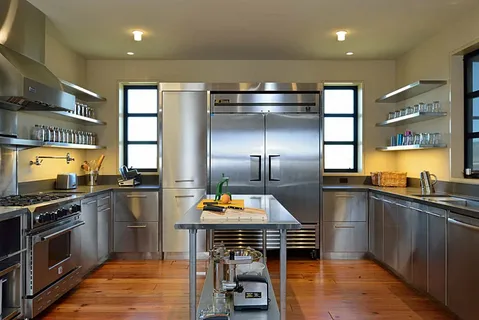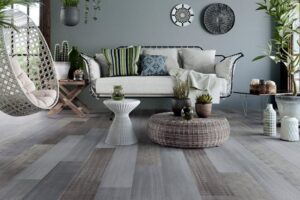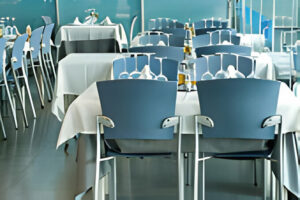
Kitchen stainless steel table generally represent versatile commodities in this niche – durable and with a unique aesthetic. This is especially true in the case of stainless steel tables, which are a piece of direct kitchen equipment that is needed in most residential and practically all commercial kitchens. Due to this peculiar nature and their qualification of maintaining hygienic properties, resilience to corrosion, and various compatibility features, their purchase should be considered carefully. Whether you need to buy this piece of furniture for culinary reasons or to create extra storage or working space, our guidance will help you select it.
Material Quality and Grade:
Stainless steel fabrication is offered in various grades that are appropriate for precise applications because of their distinct characteristics. Two of the most utilized grades in culinary fabrication are grades 304 and 316 stainless steel. Grade 304, also known as “food grade,” is the standard requirement for regular kitchen usage. It is very resistant to corrosion, heat, and chemicals found regularly in kitchen atmospheres. This grade is the substance of preference for everyday cooking, food preparation, and kitchen jobs. In contrast, Grade 316 stainless steel is known for increased corrosion resistance and is ideal for severe surroundings, including coastal areas or industrial kitchens.
This grade further assembles extra elements, like molybdenum, which make it more torn and crevice-corrosion-resistant. If your kitchen is in a severe environment or has exacting hygienic requirements, Grade 316 stainless steel is the correct substance to guarantee long-lasting functioning. Therefore, it is vital to select the grade that is most acceptable for you while purchasing a kitchen stainless steel table. Grade 304 is adequate for most daily applications, while Grade 316 adds a level of assurance to more unsightly or challenging environments.
Construction and Fabrication:
Furthermore, it is necessary to assess the quality of construction in terms of how it determines the table’s durability and endurance. In this regard, the construction should be made of heavy-gauge stainless steel that ensures the essential strength, robustness, and reliability. It is possible to determine the thickness and strength of the steel construction material by measuring the gauge. Heavy gauge makes the surfaces thick which assures the ability of the table to resist warping and bending as a result of the heavy load and frequent usage.
Also, ensure the Stainless steel fabrication is of high-quality, meaning that the weld seams are smooth to eliminate the breeding areas for food particles and bacteria. Inferior welding creates weak nicks which compromises the structural strength that will eventually collapse and fail. Finally, its design features such as reinforced edges that prevent denting and damage upon impact and strong legs with adjustable feet to ensure stability on uneven floors/ground. For widespread usage and heavy loads, reinforced cross-bracing or additional supports are essential to ensure the body doesn’t develop wobbly.
Size and Dimensions:
Among the other factors pertinent to the kitchen’s function and suitability, the size and dimensions are crucial in ensuring proper selection of the stainless steel table. It would be necessary to measure the kitchen area, including the space on the floor and another countertop level, to determine if there is enough space for this table Also it is important to how the new table can fit within the cooking process and serve as a station. As stated in the introduction, there are small utility tables for a tiny-sized kitchen and professional chef workshops. Some tables have storage room under the table or in the form of a box attached to the leg’s underside.
Thus, the size will matter when picking the storage size that suits the kitchen size without taking much space but considering if there is enough space left for making food preparation, dishwashing, and any more action performed in the kitchen. It seems proper to pick a small and easily moving table for a truly tiny kitchen with minimal countertop space. A much larger one, if the kitchen is spacious and features a few built-in elements, like a cutting board and sink.
Surface Finish:
The characteristics of surface finish matter in how the stainless steel table will look like and function eventually. Different textures, levels of shine, and resistance to damage and stains all have their best applications. Understanding the nature of each finish helps pick the most suitable based on desired cleanability and aesthetic appearance. For example, brushed finishes are distinct in their non-directional topography which makes small scratches and oil paths unnoticeable, which makes them ideal for highly active cooking zones.
The rougher surface also improves slip resistance, which is very important in food preparation. In addition, a brush finish only needs to be wiped with a damp cloth and mild detergent to look clean. By contrast, polished finishes have a bright and reflective appearance and are more delicate. The shining of the mirror is easily corroded and needs regular bracing to keep the color bright. With proper care, the color of the bracelet will last for years, making a bright impression in kitchen decorations.
Finally, matte finishes are even and seamless, which makes cleaning and maintaining them easier. While matte areas may reveal fingerprints and smears more obviously than brushed textures, they became more hard to scratch and can be brushed while retaining the original appearance. For this reason, mats are a common choice for minimalistic calves as well as when cleanliness is important.
Additional Features and Accessories:
Before deciding on a particular premium stainless steel surface for your culinary corner, an extensive analysis of bonus features and extras should be made to fit the optimal choice to your individual needs and preferences. The qualities mentioned above, such as the quality of the raw material and dimensions, may be complemented by determining these additional elements that could significantly enhance the usability and convenience of your food preparation space.
Firstly, integrated back panels might serve as a safety net to prevent any spills or splashes from staining and dirtying the walls or the area surrounding your setup. Specifically, this attribute could give your corner a more refined flair. Another potentially useful component is under-countertop shelves and drawers, ensuring that any cutlery, cooking equipment, or necessary ingredients are kept at arm’s length. Such storage options capitalize on the vertical dimension and allow for a more organized and neat area that is beneficial for faster and more streamlined meal preparation. Lastly, several stainless steel surfaces have adjustable legs or casters, which provide room for creativity in terms of portability and steadfastness.
The legs can be adjusted to level the table in case of an uneven floor to ensure a stable and sturdy working area. The casters, in turn, allow you to rearrange the pieces more freely and conveniently, thus enabling flexible placement for cleaning.




